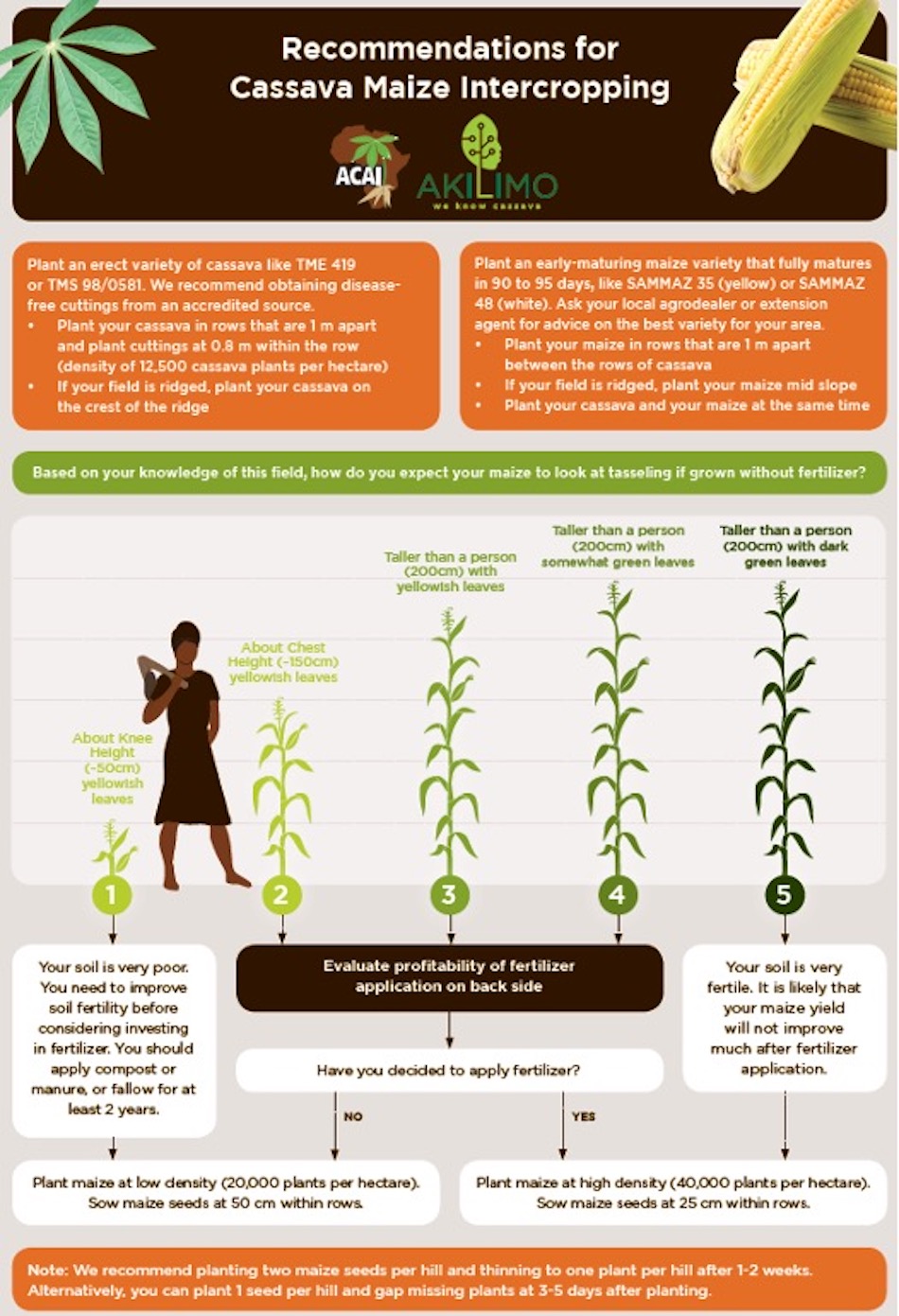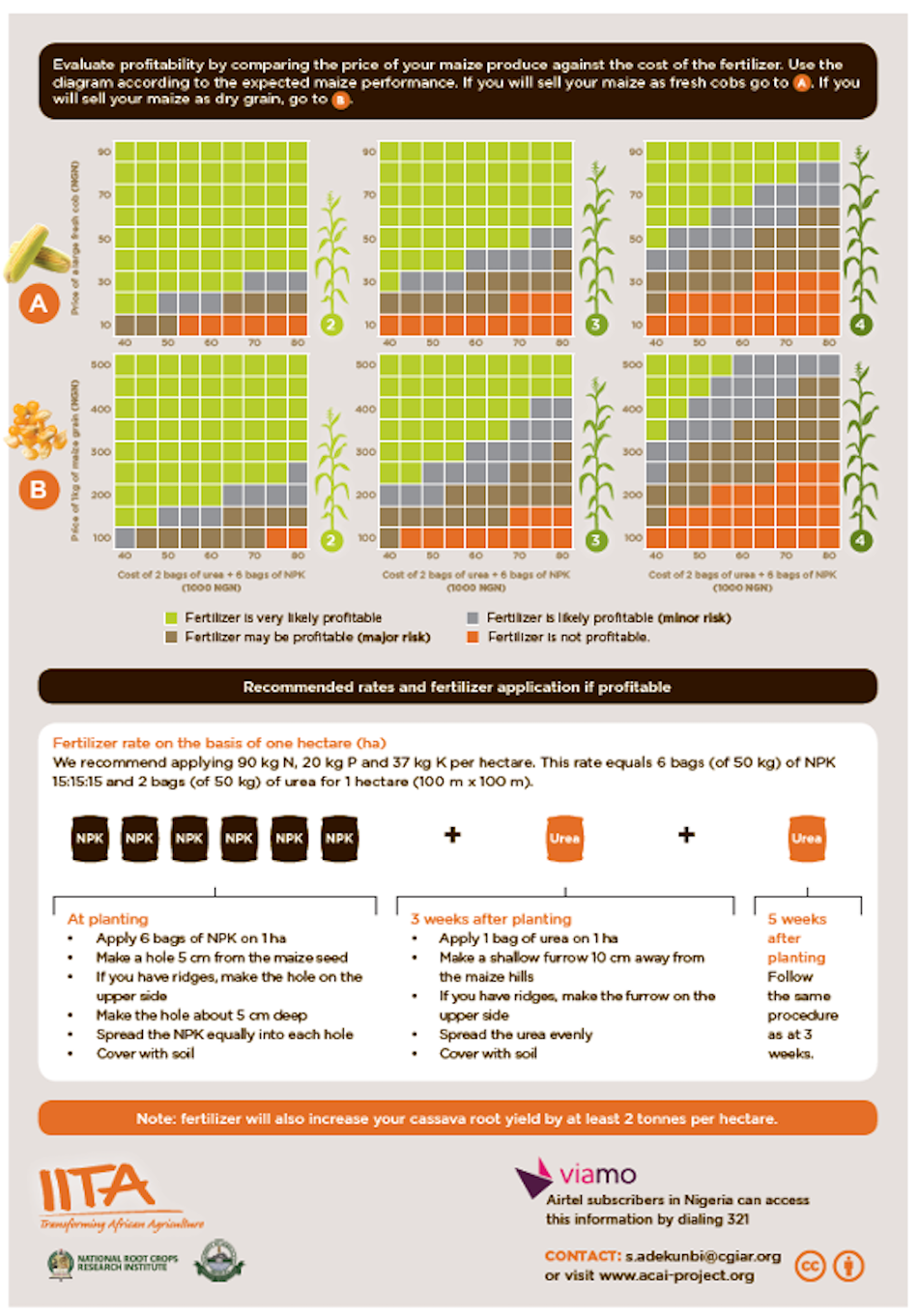Recommendations for cassava-maize intercropping
Cassava-maize intercropping is a traditional crop production system in southern Nigeria. Yields from both crops, however, are low compared with potential yields. New collaborative research looked at planting densities and nutrient management to create a site-specific decision support tool for farmers.
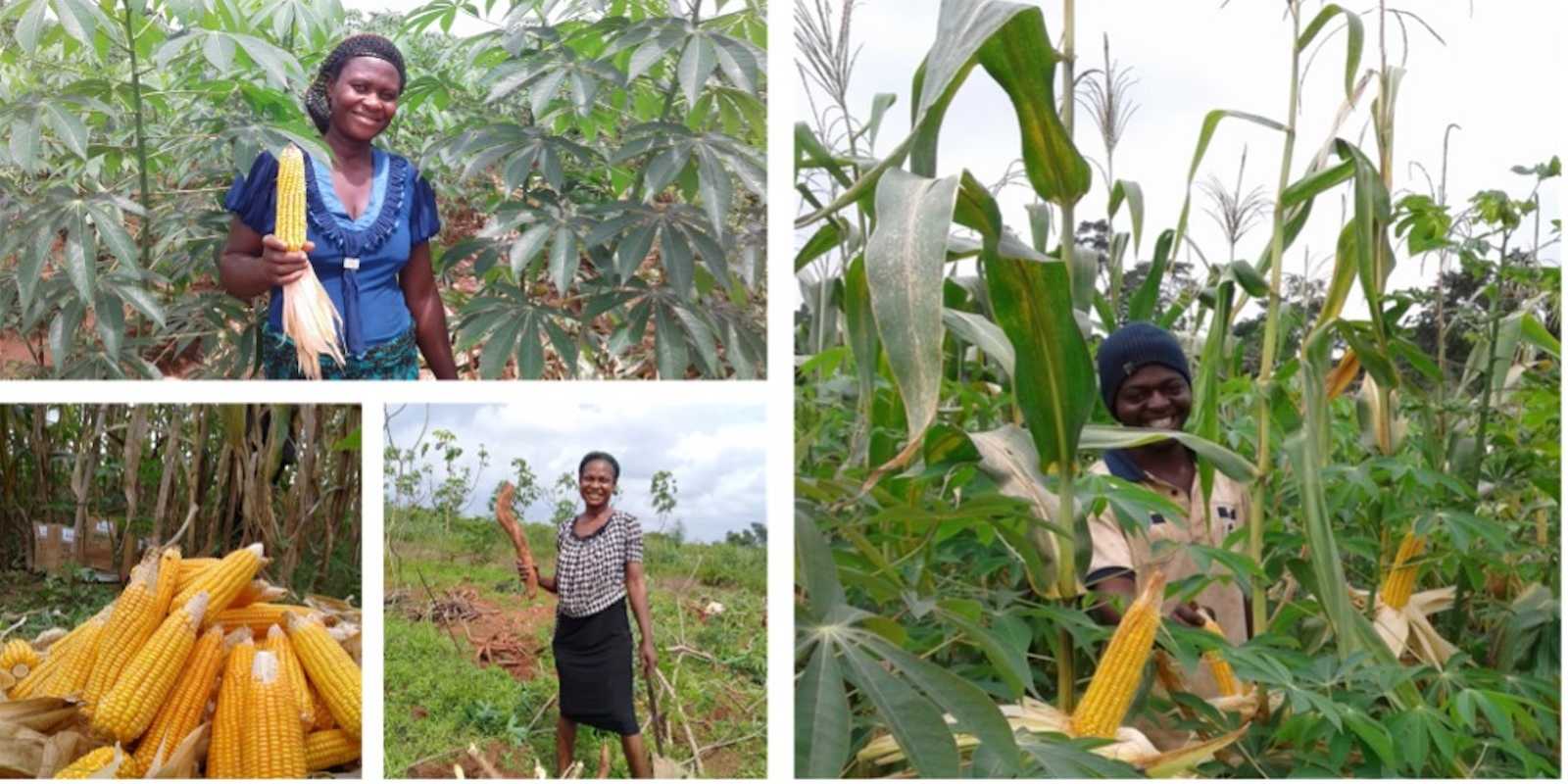
Traditional cassava-maize intercropping
Traditional crop production systems such as agroforestry, crop rotation, intercropping, and polyculture remain the dominant agricultural practices by at least half of the world’s farming population today. The cassava-maize intercropping system is one of these traditional crop production systems that has stood the test of the time in southern Nigeria. In Sub-Saharan Africa, cassava and maize are important staples for over 800 million people. Popular among smallholder farmers, the system guarantees food security and flexible income for farmers.
The compatibilities of both crops as intercrops for ecological (weed control and soil moisture retention) as well as resource use-efficiency (land, nutrient, soil moisture, solar radiation) play major roles in the popularity of the system among smallholders. While cassava is a deep-rooted crop, maize is shallow-rooted. Cassava is harvested between 8 to 15 months after planting, and maize is harvested within 4 months. The maize harvest affords farmers access to food and income early in the season before cassava is due for harvesting months later. In addition, cassava storage roots can store underground for several months after they become due for harvesting. An attribute that has earned cassava the name “the living savings” among some smallholders.
Such traditional production systems are extremely important for food security and have potential for ecological sustainability. However, such systems often receive relatively negligible research attention and investment for improvement. Because of declining farm sizes and poor soil fertility, the cassava-maize system in Nigeria is declining in productivity. This decline in yields has led to uncontrolled land-use changes, loss of biodiversity, and over-use of synthetic fertilizers without accountability or responsibility to the environment.
A collaboration for cassava
Despite the importance of cassava and maize in the livelihoods of Nigerian smallholders, yields from both crops are poor in their fields compared with yields from research stations. This is due in part to farmers implementing sub-optimal cassava and maize planting densities and a lack of adequate nutrient supply and management. To address these challenges, Charles Nwokoro led a research study within the framework of the external page African Cassava Agronomy Initiative at the Sustainable Agroecosystems Group of ETH Zurich. The project was coordinated by the International Institute of Tropical Agriculture, Nigeria in collaboration with the National Root Crops Research Institute, Nigeria, Federal University of Agriculture Abeokuta, Nigeria, and the Sasakawa African Association, Nigeria.
The aims of the project were based on the needs of farmers and local organizations, who desired advice on the intensification of cassava-maize intercropping systems. To develop decision support for cassava-maize intercropping systems, the project team investigated options to increase productivity and profitability through increased cassava and maize plant densities and fertilizer application.
Charles Nwokoro adopted an on-farm research approach and compared results of two intensification management options, plant density and fertilizer application. The field trials were implemented on 134 farmers’ fields in three agroecological areas in Nigeria between 2017 and 2019. The goal was to capture response variations to treatments from different environments to support site-specific agronomic management recommendations.
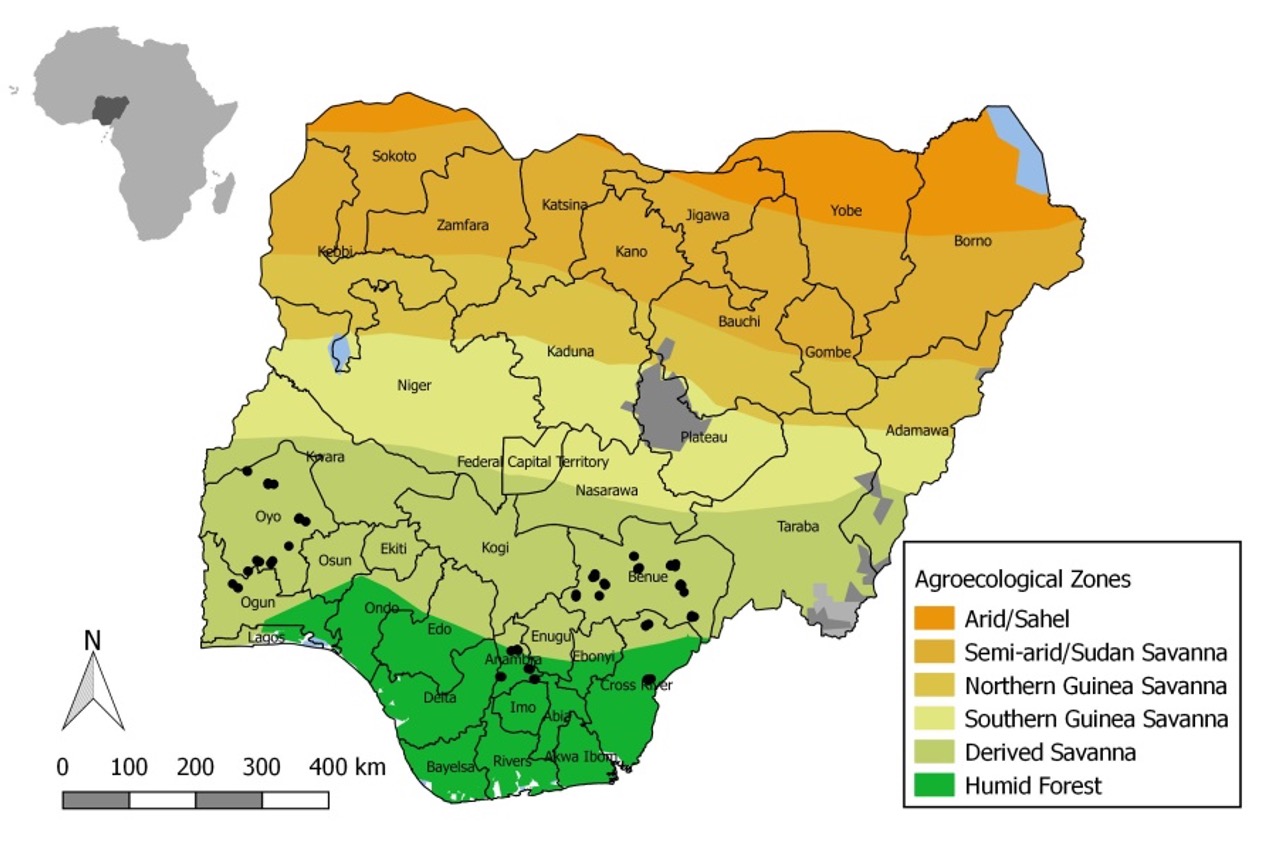
Increasing planting densities
Using the cassava-maize intercropping system as a case study, study results from Nigeria provided vital insights into the ecological, economic, resource, and food safety rewards of research investments in the often ignored traditional cropping systems. Results showed that the highest cassava and maize yields were obtained when both cassava and maize planting densities were higher than typical densities. Thus, optimizing the planting density of the intercropping system increased productivity. However, the increase in productivity with fertilizer application was field-dependent. Several fields responded differently to fertilizer application and cropping densities. These findings justify even more the need for site-specific recommendations on fertilizer use and cropping density.
Results from the study also showed the beneficial effect of fertilizer application on storage root quality: fertilizer application reduced storage root cyanide content during drought and increased the starch yield of cassava.
Further, the study established that rural smallholder farmers who could neither afford nor have access to soil testing facilities can use previous maize performance of their fields to determine if fields require fertilizer application or not. With this, fertilizer over-use can be avoided, and profit maximized through informed management decisions making.
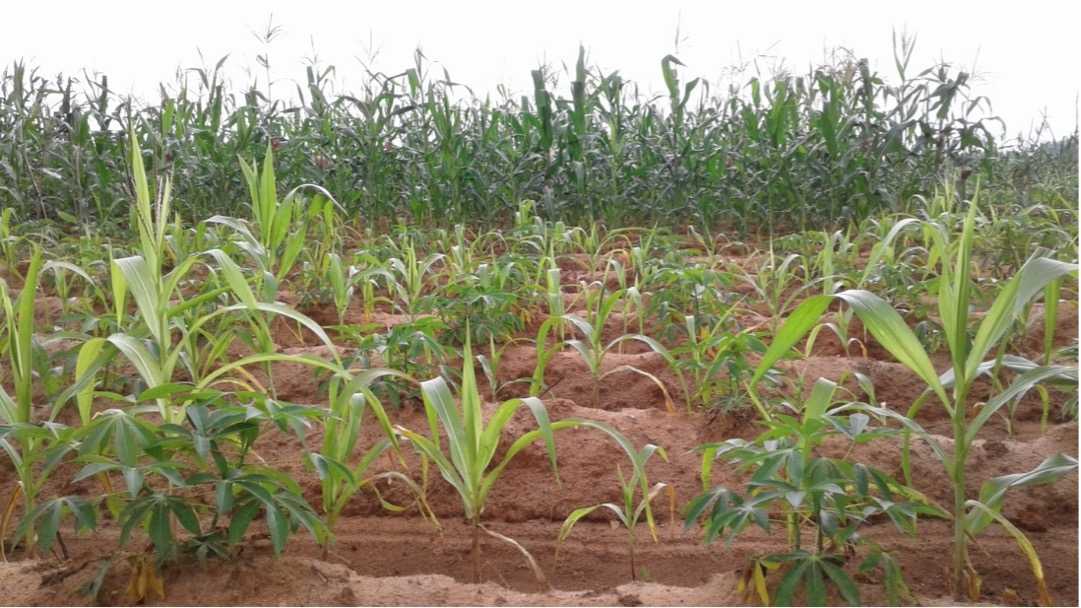
Tools for future decision making
Based on the numerous insights from the field trials, a decision support tool for cassava-maize intercropping for different soil conditions was developed (see figure). The tool is complemented by a guide to evaluating profitability by comparing the price of maize produce against the cost of fertilizer investment (see figure).
This research is the first to be conducted on a scale that covered the heterogeneity of soils in Nigeria to generate information and give site-specific agronomic management recommendations to farmers for yield improvements. The ecological benefits of reducing applied but non-plant utilized nutrients following the guide is a contribution to the sustainable use of production resources.
Publications
external page Cassava-maize intercropping systems in southern Nigeria: Radiation use efficiency, soil moisture dynamics, and yields of component crops by Nwokoro et al. (2022)
external page Developing recommendations for increased productivity in cassava-maize intercropping systems in Southern Nigeria by Nwokoro et al. (2021)

Charles Nwokoro is currently a Scientific Officer in the Sustainable Agroecosystems Group at ETH Zurich.
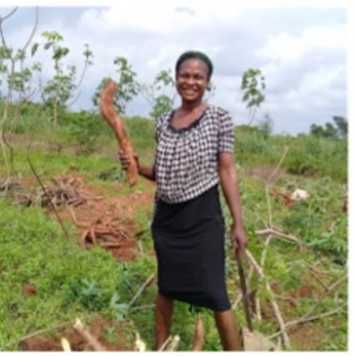
Read about Charles' personal experience working with farmers in Nigeria during his research project in his ETH Ambassadors Blog: Cassava-Maize Intercropping System: A Livelihood-Sustaining System Under Threat
